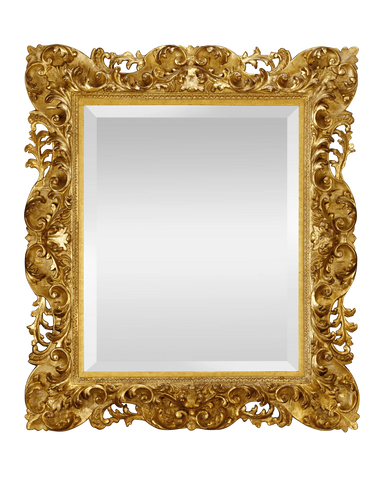While individuals may strongly prefer one aesthetic, most people's tastes shift between minimalism and maximalism, influenced by life stages and fashion trends. Recently, there's been a notable shift towards maximalism among artists and collectors, who find joy in exploring a rich diversity of objects, colors and textures.
Join us as we explore the philosophies of minimalism and maximalism as observed through decor, jewelry and fine art, examining how these contrasting approaches influence the aesthetics and functionality of spaces and objects.
Maximalist-Inspired Jewelry
Have you been seeing the “Mob Wife” aesthetic mentioned lately? Enjoy these beautiful jewels and read on to learn all about this viral trend.
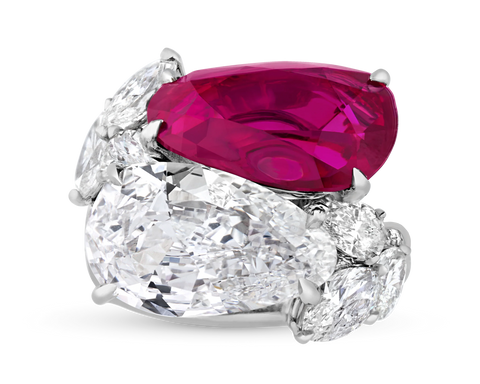

Gold And Diamond Necklace. M.S. Rau.
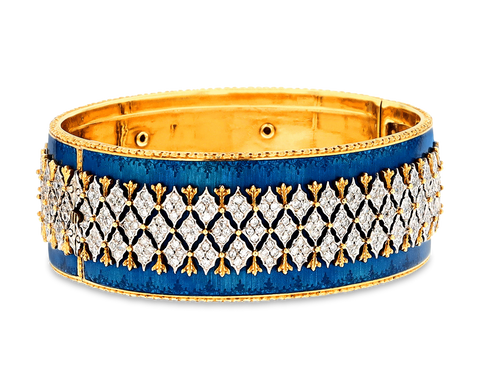
Luxury Redefined: The Influence of 'Mob Wives' Maximalism in Fashion
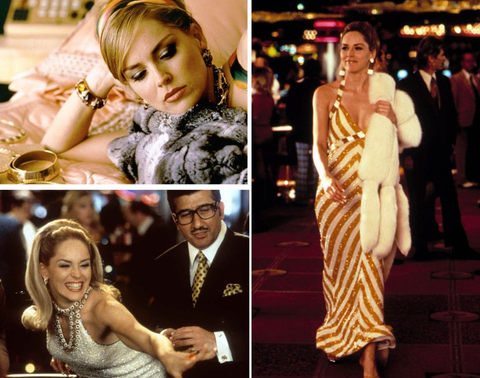
Sharon Stone in Casino (1995). Source.
This year, as The Sopranos celebrates its 25th anniversary, the "mob wife" aesthetic has surged in popularity across TikTok, fashion magazines and designers globally. This trend serves as a striking counterpoint to the long-prevailing "clean girl" aesthetic, characterized by minimalist and neutral fashion choices, as epitomized by celebrities like the Kardashians. Influencer Kayla Trivieri notes a departure from slick-back hairstyles and beige-dominated wardrobes, making way for the complex and historically rich portrayal of the "mob wife." This aesthetic draws inspiration from the wives of Italian-American mob members from the mafias of New York and Chicago that captured the 1970s' popular culture.
An important linguistic distinction between these aesthetics lies in the transition from "girl" to "woman," emphasizing maturity, confidence and a rejection of girlish simplicity. The "mob wife" aesthetic embraces bold hairstyles, requiring significant effort and product to achieve voluminous looks, alongside dark, smoky eye makeup reminiscent of the early 2000s and deep purplish lip hues. Central to achieving this look is a maximalist approach to jewelry—opting for luxurious, high-quality pieces over costume jewelry, with designs from esteemed houses like Versace, Gucci and Dolce & Gabbana.
This trend champions opulent furs, gold jewelry and classical motifs enriched by Rococo extravagance, mirroring the vibrant energy of an Italian grandmother who dons patterns, prints and colors with pride. Whether this aesthetic marks a lasting shift or merely the latest swing in the pendulum of fashion preferences remains to be seen. What is clear, however, is the cyclical nature of aesthetic trends: what is decluttered eventually becomes cluttered again, awaiting the inevitable return to simplicity—when the next cycle of "spring cleaning" begins.
Maximalist-Inspired Objects
Has your quest for beautiful Italian objects been reignited? Please view these stunning Italian objet d’art and read on to learn about the history of minimalism vs. maximalism.

Italian Silver-Mounted Hardstone Centerpiece. Circa 1880. M.S. Rau.
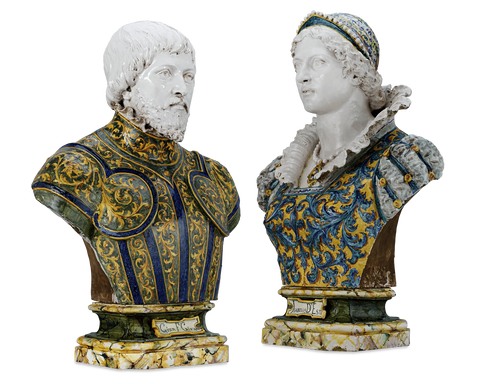
Isabella D'Este And Francesco II Gonzaga Majolica Busts By Angelo Minghetti. Circa 1880. M.S. Rau.
History of Minimalism vs. Maximalism
This oscillation between complexity and simplicity has recurred throughout much of history, often influenced by political rulers who not only shaped governmental decisions but also cultural trends within their countries. For example, the French aristocracy long served as the true arbiters of fashion for much of Western civilization. What the Sun King favored, his descendants felt the need to reject, perhaps to symbolize a clear separation of political identity. Alternatively, this behavior might reflect what many siblings experience: a need to feel 'special.'Historical Design Trends
Byzantine art featured elongated figures and simplified faces until the innovations of Giotto, who portrayed his subjects with genuine human-like emotions and a naturalistic style. This approach, later known as humanism, fueled the work of Renaissance artists such as Michelangelo, Raphael and da Vinci. The expression of emotion was further intensified during the Baroque era, characterized by high contrast and subjects depicted in emotive poses, embodying grandeur as a Catholic response to the Protestant Reformation's emphasis on austerity. Most Baroque art was commissioned by the Catholic Church and wealthy Catholic patrons.
Concurrently, the French Rococo movement, largely Italian in its origins, embraced romantic opulence, drama, asymmetry, scrolling curves and extensive gilding. While Rococo buildings often featured simple exteriors, their interiors were lavishly ornamented. The style, designed to impress and awe, made grand stairways in palaces focal points, offering various perspectives of the decoration. Rococo's main ornaments included asymmetrical shells, acanthus and other leaves, birds, bouquets of flowers, fruit, musical instruments and angels.
This style spread across Europe and influenced national trends until the pendulum swung back towards more streamlined aesthetics with the advent of Neoclassicism, which emphasized simplicity, reason and rationality. Neoclassicism represented a return to the classical ideals of ancient Greece and Rome, reacting against Rococo's excessive ornamentation and striving for order and restraint in art. After Neoclassicism came Romanticism, and so the cycle continued.
Maximalist-Inspired Furniture
Assuming you’re convinced that maximalism is the way to go, please enjoy these stunning treasures. Read on to learn about the current status of this age-old debate.
Cultural Influences on Design
From a sociological perspective, periods of economic optimism and cultural exuberance can lead to a rise in maximalist tendencies, while moments of reflection and a desire for authenticity and sustainability may bolster minimalist approaches. There is no shortage of possibilities for investigation into the various causes of these historical trends. Consider the 1920s and the rise of Art Deco opulence—with its unnecessary shapes and patterns, and abundant use of glorious jewels and precious metals.This period gave rise to a form of maximalism that remains popular today among designers and collectors. On the other side of the spectrum, the impact of the 2008 recession may have contributed to the recent rise of minimalism. By 2010 the rising popularity of tiny homes, sleek aesthetics and beige decor proliferated across the design zeitgeist.
So where are we now? Perhaps we are entering the advent of welcoming a little bit of both ideals, as many collectors and designers are seeking to strike a middle ground between minimalism and maximalism. Importantly, the dynamic between these two aesthetics is not binary but rather a spectrum, with many collectors and enthusiasts finding their unique balance, which may evolve over time or according to the context of their collections.
